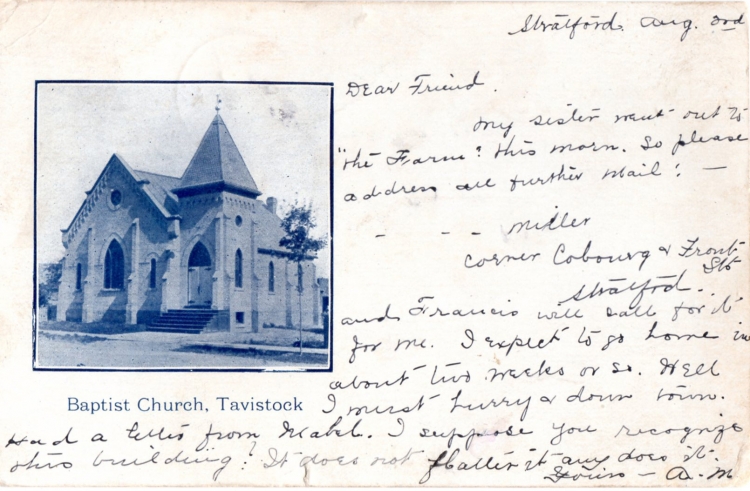This postcard from Tavistock has the earliest post mark in our collection. It is postmarked August 2, 1906. It is an example of a postcard from the "Undivided Back" era--the message had to be written on the same side as the picture.
To make a postcard you need at least three main people: you need a photographer, you need a publisher, and you need a printer.
Many postcard collectors spend a lot of time trying to figure out who was behind the postcards they have in their collection – the printer, the publisher, the photographer, the distributor, the seller. When it comes to photographers, for example, there were some individuals who roamed the country taking photos for publishers. Just as often, however, the postcard views that we see were made from photos submitted to a publisher by a local seller, often the town’s pharmacist or general store owner. He would order postcards in a certain style and price range that were shown in a publisher’s catalogue or would order from the publisher’s travelling salesmen. The publisher would then make arrangements to have the postcard printed by a printer usually located in England or Germany.
In the case of this postcard, we know the photographer is probably John Lemp because the photo is in the Lemp collection. Sometimes the photographer was also the publisher and would arrange production through a printer himself.
Early postcards such as this one are printed as something called “Halftones”. Halftones are created through a process called dithering in which minute black and white discrete dots in a pattern are varied in density to simulate different shades of gray. When viewed from a distance, the dots blur together, creating the illusion of continuous lines and shapes. But with a hand lens you can see the pattern and discrete dots. Have a look at your early postcards with a hand lens.
By half-toning an image, a postcard can be printed using less ink. That is the reason that many newspapers and magazines still use half-toning today to print pages more cheaply and efficiently.
The down-side of half-tone prints is that they tend to look less realistic and a bit dull. It is interesting that the writer of this postcard says the same thing: “I suppose you recognize this building. It does not flatter it any, does it?”
